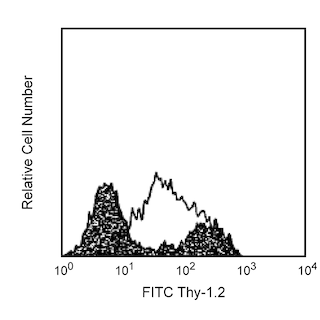-
Reagents
- Flow Cytometry Reagents
-
Western Blotting and Molecular Reagents
- Immunoassay Reagents
-
Single-Cell Multiomics Reagents
- BD® OMICS-Guard Sample Preservation Buffer
- BD® AbSeq Assay
- BD® Single-Cell Multiplexing Kit
- BD Rhapsody™ ATAC-Seq Assays
- BD Rhapsody™ Whole Transcriptome Analysis (WTA) Amplification Kit
- BD Rhapsody™ TCR/BCR Next Multiomic Assays
- BD Rhapsody™ Targeted mRNA Kits
- BD Rhapsody™ Accessory Kits
- BD® OMICS-One Protein Panels
-
Functional Assays
-
Microscopy and Imaging Reagents
-
Cell Preparation and Separation Reagents
-
- BD® OMICS-Guard Sample Preservation Buffer
- BD® AbSeq Assay
- BD® Single-Cell Multiplexing Kit
- BD Rhapsody™ ATAC-Seq Assays
- BD Rhapsody™ Whole Transcriptome Analysis (WTA) Amplification Kit
- BD Rhapsody™ TCR/BCR Next Multiomic Assays
- BD Rhapsody™ Targeted mRNA Kits
- BD Rhapsody™ Accessory Kits
- BD® OMICS-One Protein Panels
- Belgium (English)
-
Change country/language
Old Browser
This page has been recently translated and is available in French now.
Looks like you're visiting us from United States.
Would you like to stay on the current country site or be switched to your country?
BD™ AbSeq Oligo Hamster Anti-Mouse CD61
Clone 2C9.G2 (also known as HMβ3-1) (RUO)


Regulatory Status Legend
Any use of products other than the permitted use without the express written authorization of Becton, Dickinson and Company is strictly prohibited.
Preparation And Storage
Recommended Assay Procedures
Put all BD® AbSeq Reagents to be pooled into a Latch Rack for 500 µL Tubes (Thermo Fisher Scientific Cat. No. 4900). Arrange the tubes so that they can be easily uncapped and re-capped with an 8-Channel Screw Cap Tube Capper (Thermo Fisher Scientific Cat. No. 4105MAT) and the reagents aliquoted with a multi-channel pipette.
BD® AbSeq tubes should be centrifuged for ≥ 30 seconds at 400 × g to ensure removal of any content in the cap/tube threads prior to the first opening.
Product Notices
- This reagent has been pre-diluted for use at the recommended volume per test. Typical use is 2 µl for 1 × 10^6 cells in a 200-µl staining reaction.
- The production process underwent stringent testing and validation to assure that it generates a high-quality conjugate with consistent performance and specific binding activity. However, verification testing has not been performed on all conjugate lots.
- Please refer to bd.com/genomics-resources for technical protocols.
- Caution: Sodium azide yields highly toxic hydrazoic acid under acidic conditions. Dilute azide compounds in running water before discarding to avoid accumulation of potentially explosive deposits in plumbing.
- Source of all serum proteins is from USDA inspected abattoirs located in the United States.
- Illumina is a trademark of Illumina, Inc.
- Please refer to http://regdocs.bd.com to access safety data sheets (SDS).
- For U.S. patents that may apply, see bd.com/patents.
Data Sheets
Companion Products






The 2C9.G2 monoclonal antibody specifically binds to the integrin β3 chain (CD61), which associates with the integrin αv chain (CD51) to form the vitronectin receptor, as well as the αIIb chain (CD41) to form the gpIIb/IIIa complex. Both receptors mediate adhesion to fibronectin, fibrinogen, vitronectin, thrombospondin, and von Willebrand factor. Leukocyte-endothelial adhesion is also mediated by the binding of αvβ3 integrin or vitronectin receptor to CD31 (PECAM-1). In addition, interaction of the αvβ3 integrin with its ligands regulates the L-type Ca2+ channel in vascular smooth muscle cells, possibly mediating vasodilatory responses to injury. Soluble and insoluble 2C9.G2 mAb mimics the effect of the natural ligands in smooth muscle cells from rat cremaster arterioles. Furthermore, osteopontin, also named Eta-1, is a cytokine that binds to αvβ3. CD61 is expressed on platelets, activated T lymphocytes, polymorphonuclear granulocytes, and blastocysts. Cross-reactivity of mAb 2C9.G2 to rat mast cells and platelets has been observed by flow cytometric analysis. mAb 2C9.G2 has been demonstrated to block binding of rat and mouse cells to fibronectin.
Development References (8)
-
Ashkar S, Weber GF, Panoutsakopoulou V, et al. Eta-1 (osteopontin): an early component of type-1 (cell-mediated) immunity. Science. 2000; 287(5454):860-864. (Clone-specific: Blocking). View Reference
-
Frieser M, Hallmann R, Johansson S, Vestweber D, Goodman SL, Sorokin L. Mouse polymorphonuclear granulocyte binding to extracellular matrix molecules involves beta 1 integrins. Eur J Immunol. 1996; 26(12):3127-3136. (Biology). View Reference
-
Kieffer N, Phillips DR. Platelet membrane glycoproteins: functions in cellular interactions. Annu Rev Cell Biol. 1990; 6:329-357. (Biology). View Reference
-
Moulder K, Roberts K, Shevach EM, Coligan JE. The mouse vitronectin receptor is a T cell activation antigen. J Exp Med. 1991; 173(2):343-347. (Biology). View Reference
-
Piali L, Hammel P, Uherek C, et al. CD31/PECAM-1 is a ligand for alpha v beta 3 integrin involved in adhesion of leukocytes to endothelium. J Cell Biol. 1995; 130(2):451-460. (Clone-specific: Blocking). View Reference
-
Schultz JF, Armant DR. Beta 1- and beta 3-class integrins mediate fibronectin binding activity at the surface of developing mouse peri-implantation blastocysts. Regulation by ligand-induced mobilization of stored receptor. J Biol Chem. 1995; 270(19):11522-11531. (Clone-specific: Blocking). View Reference
-
Wu X, Mogford JE, Platts SH, Davis GE, Meininger GA, Davis MJ . Modulation of calcium current in arteriolar smooth muscle by alphav beta3 and alpha5 beta1 integrin ligands. J Cell Biol. 1998; 143(1):241-252. (Biology). View Reference
-
Yasuda M, Hasunuma Y, Adachi H, et al. Expression and function of fibronectin binding integrins on rat mast cells.. Int Immunol. 1995; 7(2):251-8. (Immunogen: Flow cytometry, Functional assay, Immunofluorescence, Immunoprecipitation, Inhibition). View Reference
Please refer to Support Documents for Quality Certificates
Global - Refer to manufacturer's instructions for use and related User Manuals and Technical data sheets before using this products as described
Comparisons, where applicable, are made against older BD Technology, manual methods or are general performance claims. Comparisons are not made against non-BD technologies, unless otherwise noted.
For Research Use Only. Not for use in diagnostic or therapeutic procedures.